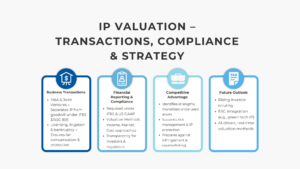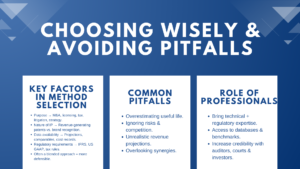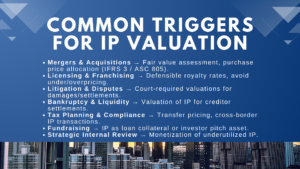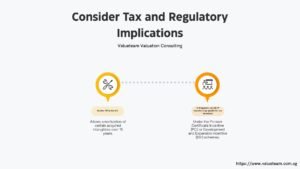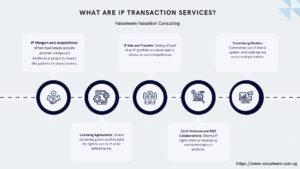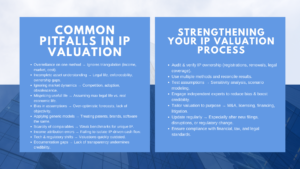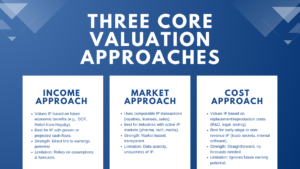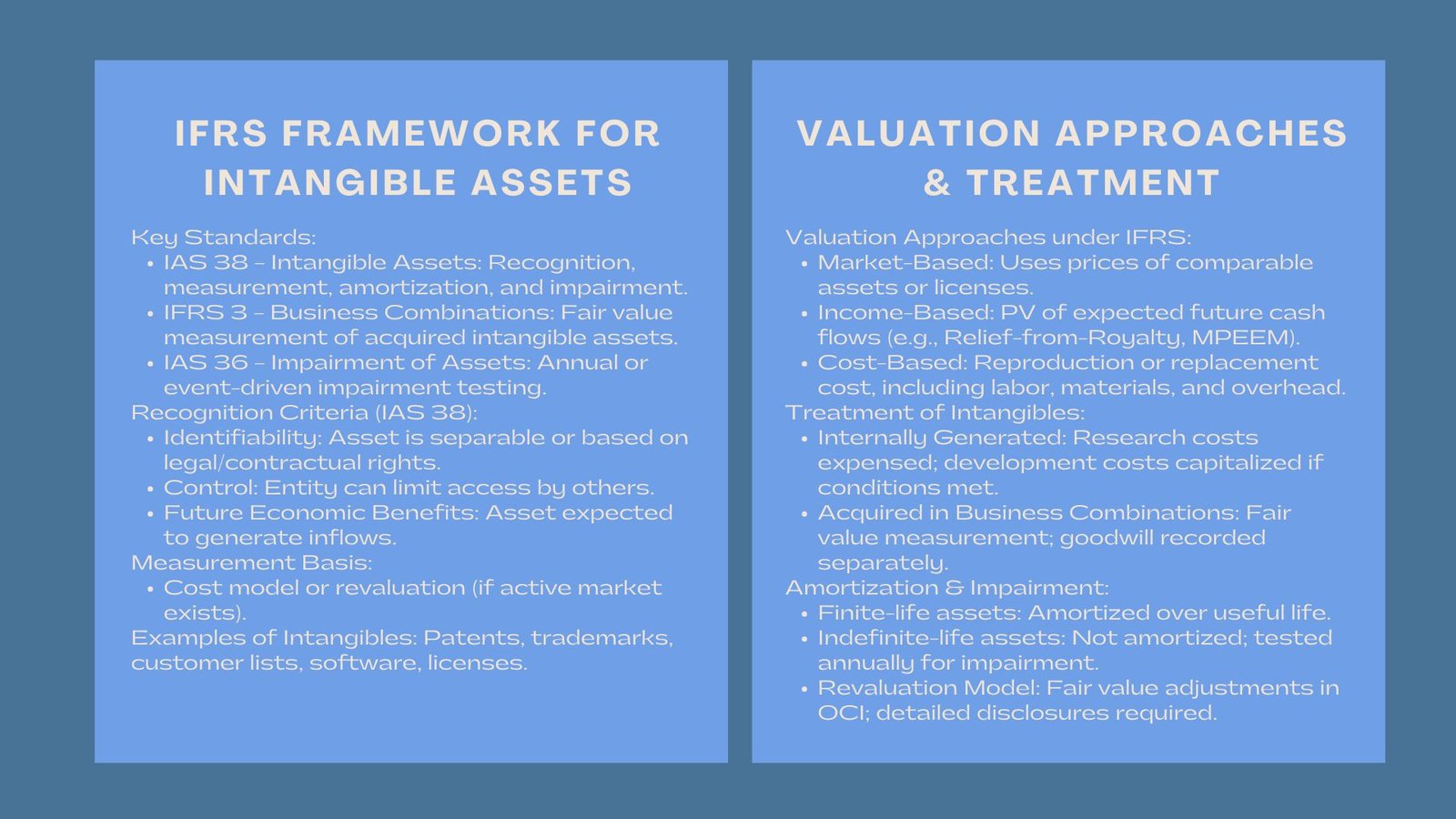
Comprehensive IFRS IP Valuation Workshop
IFRS Requirements for Intangible Assets and IP Valuation
Comprehensive IFRS IP Valuation Workshop
The intangible assets in the form of brands, patents, software, and other intellectual property (IP) currently constitute a considerable part of enterprise value in the changing business environment around the world. These resources tend to be more valuable than tangible assets, they symbolize innovation, competitive edge and market potential. In order to provide transparency and consistency in financial reporting, the International Financial Reporting Standards (IFRS) give particular guidelines on how to recognize, quantify and present intangible assets and IP valuations in financial statements.
The knowledge of IFRS requirements of the intangible assets will be important not only in compliance, but also in strategic decisions. Having the pertinent valuation and disclosure enables the companies to capture their real value, draw investors, and to efficiently operate their innovation portfolios. Companies that disregard these norms are at the risk of misrepresenting their asset base, deceiving stakeholders and undergoing regulatory examination.
General Overview of IFRS Standards of Intangible Assets.
IFRS Framework and significant Standards.
The primary accounting standard that regulates the accounting of intangible assets within the IFRS is the standard of recognition, measurement, and amortization or impairment of intangible assets and is referred to as IAS 38 – Intangible Assets. Also, IFRS 3 – Business Combinations and IAS 36 -Impairment of Assets are important in case intangible assets are obtained during mergers or impairment tests.
The IAS 38 defines an intangible asset as an asset of the non-monetary type and is non-physical and identifiable, controlled by the entity and is likely to produce economic benefits in the future. The examples are trademarks, customer lists, licenses, and software developed internally.
In the meantime, the IFRS 3 regulates the valuation of intangible assets obtained in the case of merger or acquisition, which is to be determined in the form of fair value at the time of acquisition. This guarantees transparency and accurateness in purchase consideration allocating to identifiable assets and goodwill.
Recognition Criteria and Measurement Basis.
In IAS 38, the recognition of an intangible asset is only possible under certain conditions:
- Identifiability – the asset may be detachable or it may be based on contractual or legal rights
- Control – the party may limit access of the economic benefits of asset by others.
- Future Economic Benefits – the asset is expected to bring in an inflow of the business.
Upon recognition, intangible assets are calculated either at cost or revalued amount (where there is a good market value that is readily available). This process reflects the IFRS requirements for valuing intellectual property and intangible assets for accurate financial reporting.
Valuation Approaches under IFRS for Intangible Assets
Market-Based Valuation Approach.
The market method is used to estimate value on the basis of actual prices of other related assets. In the presence of active market data, such as of a license, broadcasting rights, or specific trademark, similar sales or licensing transactions can be used by the entity to inform a fair value determination. Nevertheless, this approach is sometimes constrained by the fact that numerous IP assets are not frequent and are one-of-a-kind.
Income-Based Valuation Approach.
Income approach is mostly applied when market information is limited. It puts value on the intangible assets as they would be valued in terms of their present value of the likely cash flow in future. Techniques such as the Relief-from-Royalty Method or Multi-Period Excess Earnings Method (MPEEM) are often applied. These methods align closely with professional IFRS-compliant IP valuation methods for financial and strategic reporting, as they quantify economic benefits over the asset’s useful life.
Cost-Based Valuation Approach
The cost method estimates the current replacement or reproduction cost of intangible asset taking into account materials, labor and overhead. This technique is normally applied to internally created software or early-stage R&D initiatives where the cash flow later is hard to ascertain. Obsolescence or technological changes The adjustments are made to changes in future utility by obsolescence or technology.
Treatment of Internally Generated and Acquired Intangibles by IFRS.
Intangible Assets Generated internally.
Under IFRS, there are research and development phases. The research costs will be treated as expenses and the development costs capitalised in case the project satisfies some conditions such as technical feasibility, purpose to be completed and the likelihood of likely benefits in the future. The price of developing proprietary software or patented technology can be identified, as an example, as an intangible asset when such price crosses these thresholds.
Yet, internally created brands, customer list, and goodwill are not capitalizable. This is so that only the measurable and verifiable assets are recorded in the balance sheet and as a result, the reliability of financial statements remains.
AIA Business Combinations.
In cases where intangible assets are purchased during a merger or acquisition, IFRS 3 does its fair value measurement at the time of the acquisition. This can be in the form of patents, trademarks, customer contracts and trade secrets. Goodwill is not considered as an asset and each asset is identified individually provided it is identifiable and measurable. The valuation process is usually such that outside specialists apply standardized procedures so that consistency is upheld with those principles of the IFRS fair value hierarchy.
Amortization and impairment of Intangible Assets.
Determining Useful Life
IAS 38 asks the management to determine the existence of finite life or indefinite life of an intangible asset. Finally, patents or software licenses are assets whose lives are finite and therefore are amortized over its estimated economic life normally using the straight-line method. Assets whose lives are indefinite, including some trademarks and indefinite licenses, are not subject to amortization but are required to be subject to testing on an annual basis to impairment.
Under IAS 36, impairment Testing is conducted.
Recoverable amount of the asset should be matched with its carrying value when there are signs of impairment (e.g. when profitability and market dynamics begin to shift). The value in use is the fair value of recoverable assets less the cost to sell or the value in use. Any carrying amount that is in excess of recoverable amount is treated as impairment loss in the income statement.
Goodwill and unspecified assets that are indefinitely lived should be impaired once a year regardless of its indicators. These tests would make the financial statements reflect the true value of assets and not exaggerate the profitability.
Revaluation Model and Disclosures.
In case there is an active market, the entities can apply the revaluation model to calculate the intangible assets in fair value. Recognition of any upwards revaluation is carried out in other comprehensive income (OCI) and accumulated in equity as a revaluation surplus. Comprehensive disclosures are also required by IFRS which include:
- The fundamentals of fair value.
- Amortization practice and useful lives.
- Assumptions on impairment testing.
- Key inputs sensitivity analysis.
This transparency will boost investor confidence and shows a commitment to proper and fair reporting by the management.
IFRS-Compliant IP Valuation as a Strategic Implication.
Improving Investor/Stakeholder Confidence.
Public valuation policies would assure the investors that the intangible assets have been measured in the right way, and there is no uncertainty about how much a company would earn. This helps to establish confidence with the stakeholders and informed investment decision making.
Favoring M&A and Cross-border Transactions.
Under IFRS 3, fair value measurement in mergers and acquisitions will ensure that the buyers and the sellers know well the intangible asset base of the target company. It assists in aligning the allocation of purchase prices, avoids post-deal disputes and offers a uniform system of valuations, cross-jurisdictionally.
Enhancing Corporate Governance and Strategy.
Proper valuation of IP also leads to better governance since the standards of accounting are in line with business strategy. It helps the management to make data-based decisions on the level of R&D spending, IP protection, and commercialization to enhance long-term strategic planning.
Conclusion
The IFRS gives a clear and systematic framework of recognizing, measuring, and disclosing the intangible assets and intellectual property. Since its first mention in IAS 38 to impairment test in IAS 36 and fair value measure in IFRS 3, the adherence to these standards guarantees the transparency and comparability in industries and borders. In the current innovation-driven economy, proper IP valuation under the IFRS is not merely a regulatory need, but a strategic need to companies, which operate in the industry. With help of apprehensive and licentious valuation, the companies would be in a better position to increase credibility of their financial reporting, increase investor trust, and maximize the value of their intellectual capital.


